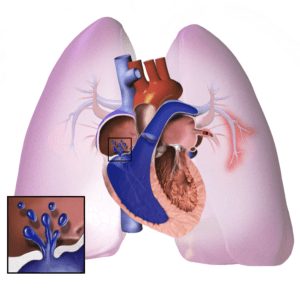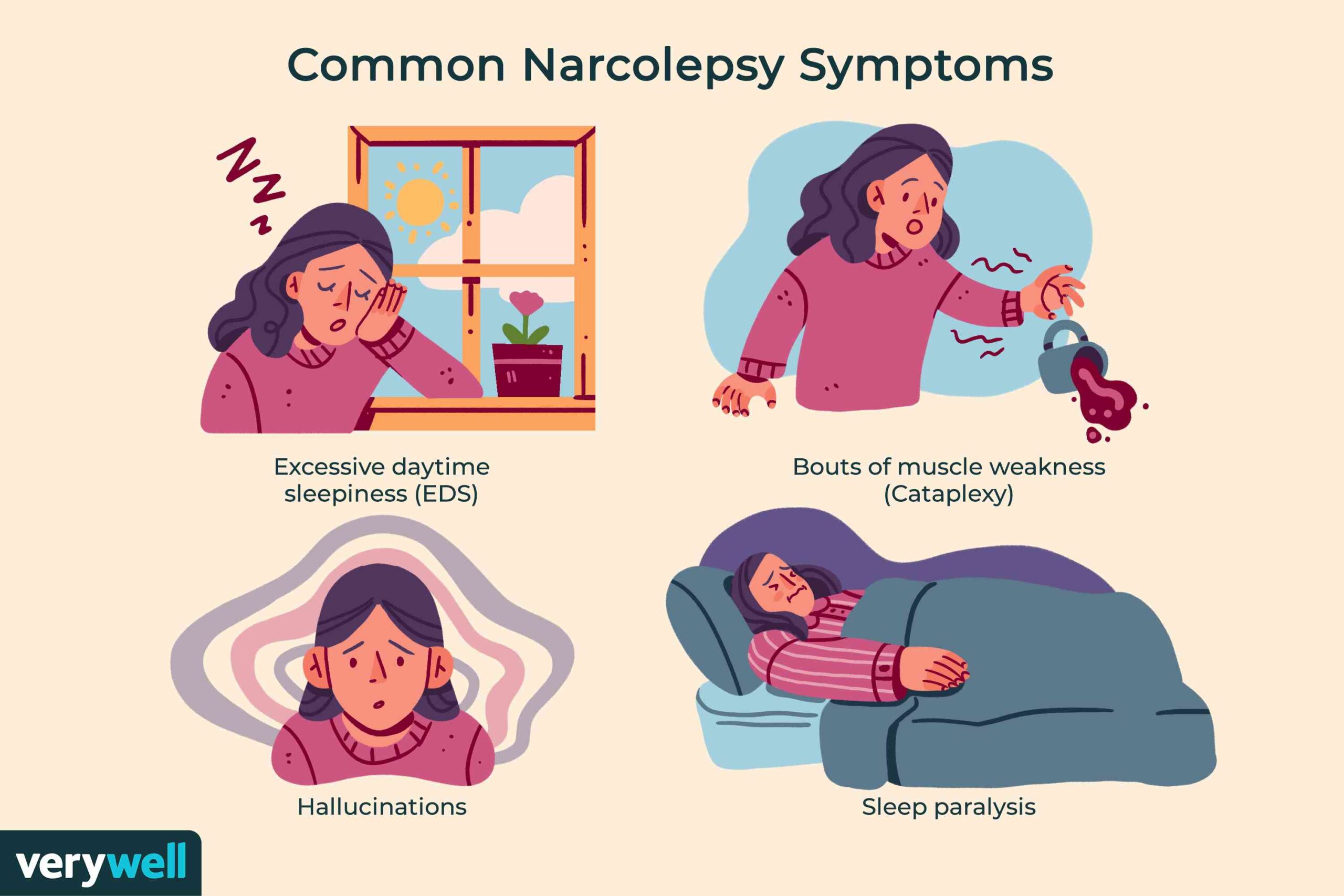

Overview
Symptoms
Breathlessness, particularly during physical activity
Chest discomfort or pressure, commonly felt in the chest’s front area
Lightheadedness or episodes of fainting
Exhaustion
Swelling in the feet, ankles, legs, or abdomen
Bluish tint to the lips or skin (cyanosis)
Rapid heartbeat (palpitations)
A cough that is either dry or brings up blood
Raspy voice
Fatigue
Causes
Cardiac issues, such as congenital heart defects, mitral valve disorders, or problems with the left ventricle
Blood clots lodged in the lungs (pulmonary embolism)
Respiratory illnesses, such as COPD or pulmonary fibrosis
Autoimmune disorders that harm the lungs, including scleroderma and rheumatoid arthritis
Elevated blood pressure
Liver conditions
Contact with asbestos
Residing at high elevations
Consumption of certain medications, including specific weight-loss drugs and illegal substances like cocaine or methamphetamine
In the initial phases of pulmonary hypertension, you might not observe any symptoms. Recognizing symptoms can be challenging as they resemble those of other health issues.
Pulmonary hypertension is of 2 types-
Symptoms of pulmonary hypertension –
- It causes difficulty in breathing.
- As breathing is the prime requirement it’s causes difficultyour in talking answer in doing all the routine work.
- Work requiring physical stress cannot be done.
- Its can cause fatigue,
- fainting,
- dizziness .
- In early stages it may not result in any symptoms at all.
- So as we mentioned in our previous articles routine check up is mandatory.
- Nowadays people avoid doing any health check ups.
- They say that they are totally normal.
- They try to search happiness in absence of knowledge.
Complications of pulmonary hypertension –
Etiology of pulmonary hypertension –
- It occurs due to the thickening of the blood vessels in the lungs.
- This causes narrowing of the blood vessels in the lungs, thus reducing the volume of the blood vessels through which the blood can flow, this once the blood pressure and hence causes pulmonary hypertension .
- Diseases of the connective tissue called sclerosis.
- Congenital anomalies of the heart.
- BMPR2 gene mutation
- Some toxins, drugs
- Cirrhosis of the liver causing scarring
- Kidney failure
- HIV infection
- Pulmonary embolism by blood clots
- Sarcoidosis
- Sickle cell anemia
- Metabolic disorders
- Aortic stenosis
- Heart valve diseases
- Parasitic infection by worms like tapeworms
- Copd
- Frequenly climbing to high altitudes .
- Treatment of pulmonary hypertension –
- We recommend treatment from a qualified and experienced, Chest physician, or MD General Medicine specialist doctor.
- The doctor will do General examination,
- Physical examination ,
- Ask medical history,
- family history,
Investigations required-
- Chest X-ray
- CTSCAN-Chest
- MRI -Chest
- ECG
- Treatment depends on the underlying cause.
- The underlying cause should be treated.
- Associated medical conditions should also be treated.
- Treatment also depends on the grading of pulmonary hypertension according to the 6 minutes walk test.
- Patient is asked to do mild exercises like walking
- Walking will improve the physical quality of exertion. This is not advisable in severe cases but only in mild cases.
- Admission to hospital and administration of Oxygen.
- Those who climb high altitudes should take oxygen cylinders with them.
Drugs for pulmonary hypertension –
- Diuretics -these reduce fluid retention and oedema in the tissues by excretion of water and salts in urine .
- Digoxin -this is used in heart failure which increases the amount of blood pumped by the heart
- Blood thinners like warfarin which reduce the risk of formation of blood clots.
- Calcium channel blockers -Diltiazem which causes vasodilation by relaxation of the smooth muscles in the blood vessels and thus increase in blood flow.
- Phosphodiasterase inhibitors like Sildenafil which increase the blood flow by increasing the diameter of the blood vessels.
- Endothelial receptor antagonist like bosentan which cause limitation in the constriction of the arteries .
- Inhalations of opioids like iloprost can relieve breathlessness .
- Surgery -Other is opted when there is no relief by conservative methods of treatment –
- Atrial septostomy -In this a shunt is placed between the chambers of the heart to increase there cardiac output.
- Lung transplant.
- Combined heart-lung transplant
- Thromboendarterectomy-this is done to remove blood clots in the coronary arteries.
- At present there is no satisfactory treatment available for pulmonary hypertension
Eisenmenger syndrome and pulmonary hypertension
Eisenmenger syndrome is a form of congenital heart disease that leads to pulmonary hypertension. It may occur with uncorrected openings between the heart chambers. An instance of this is a significant opening in the heart between the two lower heart chambers, known as a ventricular septal defect.
The opening in the heart results in improper blood flow within the heart. Oxygen-rich blood combines with oxygen-poor blood. The blood is then sent back to the lungs instead of circulating to the rest of the body. This elevates the blood flow and pressure in the pulmonary arteries, leading to pulmonary hypertension.
Risk factors
Pulmonary hypertension is typically diagnosed in individuals aged 30 to 60. Advancing age can heighten the risk of developing Group 1 pulmonary hypertension, referred to as pulmonary arterial hypertension (PAH). PAH with an unknown origin is more prevalent in younger adults.
Additional factors that may increase the risk of pulmonary hypertension include:
A family history of the condition.
Being overweight.
Smoking.
Blood-clotting disorders or a family history of lung blood clots.
Exposure to asbestos.
A congenital heart defect, which is a heart issue present at birth.
Living at high altitudes.
Usage of certain medications, including specific weight-loss drugs and illegal substances such as cocaine or methamphetamine.
Complications
Possible complications of pulmonary hypertension consist of:
Enlargement and failure of the right side of the heart. Also known as cor pulmonale, this condition causes the heart’s right lower chamber to enlarge. The chamber must work harder than normal to pump blood through narrowed or clogged lung arteries.
Consequently, the heart walls thicken. The right lower heart chamber expands to accommodate more blood. These alterations place greater stress on the heart, leading to eventual failure of the right lower heart chamber.
Blood clots. The presence of pulmonary hypertension heightens the likelihood of blood clots forming within the small lung arteries.
Irregular heartbeats. Pulmonary hypertension can induce changes in heart rhythm, known as arrhythmias, which may be life-threatening.
Lung bleeding. Pulmonary hypertension can result in severe bleeding into the lungs, including coughing up blood.
Pregnancy complications. Pulmonary hypertension can pose life-threatening risks for both the mother and the developing fetus.



